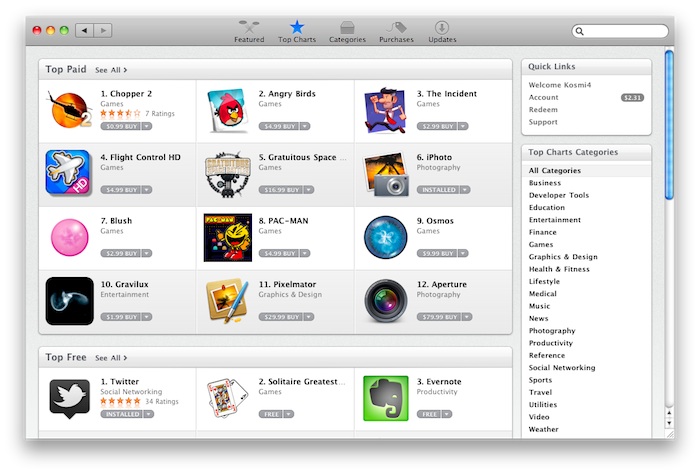

MAIL APP FOR MAC ON 10.6 DOWNLOAD
There is no need to download another app for messaging. You can create groups for work departments, sports teams, etc. It also includes a priority inbox to help keep your inbox with just the important stuff, so you can get right to work.Īnother unique aspect is the Groups feature that Spike offers. It strips away things like headers, signatures, etc., and helps you focus on just the content. So many of my emails are short messages (think Slack style), and Spike builds a design that helps make you more efficient. It takes a cue from apps like iMessage and Facebook Messenger, and it brings that same look to email. Spike is one of the most unique takes I’ve seen on email in many years. The downside is that these run locally, so if your Mac is offline, they won’t work. If you do want to extend Apple Mail further, be sure to check out plugins like Mailbutler and Mail Act-On. On the flip side, if you want the traditional Apple experience, you’ll love it, but it’s mostly lagged behind a lot of the other apps concerning new features. It’s only added a few new features like Mail Drop (a feature where you can send large attachments using iCloud), mark up on attachments, and VIP support. It primarily works the same as it did a decade ago. My biggest issue with Apple Mail is that it doesn’t do anything to drive the concept of email forward. You add your mailboxes, and it builds a traditional-looking mail app (with a universal inbox), it supports all the primary services (iCloud, Gmail, Yahoo, Hotmail, Exchange, etc.), and generally works well. In a lot of ways, Apple Mail doesn’t seem to be a lot different than it did when I first used it under OS X Tiger.įrom 40,000 feet, Apple Mail does precisely what you’d ask of it. They are developing apps for the power user while also the computer novice. So I want to answer the question: What’s the best email app for the Mac? Apple MailĪpple will always be at a disadvantage in some ways when building apps because they have to develop for the masses. So if you are reading this article and are screaming about how much better Gmail’s web interface is – know that I am not looking at web-based solutions. I want one app to use instead of four web apps. Like I said earlier, I am pulling in multiple email accounts into one app, so using webmail isn’t something I want to do. When it comes to my “heavy lifting” type work, I can get it done much faster on my Mac. On the desktop, we’re moving everything to the web.Īs much as I love iOS, If you told me that I had to pick between the Mac and iOS, I’d choose the Mac. I think a lot of it has to do with iOS, where native apps are the default. I am bringing in multiple accounts into one app (personal iCloud and multiple G-Suite accounts), but another aspect is that I prefer native apps. In the early days of email usage, I preferred using web-based mail, but as time went on, I preferred app-based email.


One of the things about my use of email that is most surprising is that I’ve gone in the reverse direction compared to how technology has moved. It’s a native macOS app for Gmail, and it supports G-Suite as well. If you have a few Gmail accounts, and you are happy with the Gmail interface, check out Boxy. I stuck with it during the disaster that was MobileMe and finally arrived at iCloud.īefore I look at the various email apps for Mac, I want to mention one other app. I switched to Gmail in 2004 when it first launched, and I finally switched to Mac in 2005 when I got my first Mac (a Powerbook G4). I switched to Mailblocks around 2002 (it was eventually acquired by AOL). I stuck with AOL until I got an account when my parents first got high-speed Internet. I got my first email account in the mid–90s (When it was still $2.95 per hour for AOL). So what’s the best email app for the Mac? Even with the popularity of web-based services like Gmail, many still prefer a desktop app to pull in multiple email addresses, use desktop plugins, and have a more native Mac experience. Signing up for almost any service on the Internet requires an email address, so it’s a universal digital identifier. Signing into iCloud (and email) is one of my first tasks when setting up a new Mac. Despite all the new messaging services, project management tools, and chat-based ecosystems, email remains essential.


 0 kommentar(er)
0 kommentar(er)
